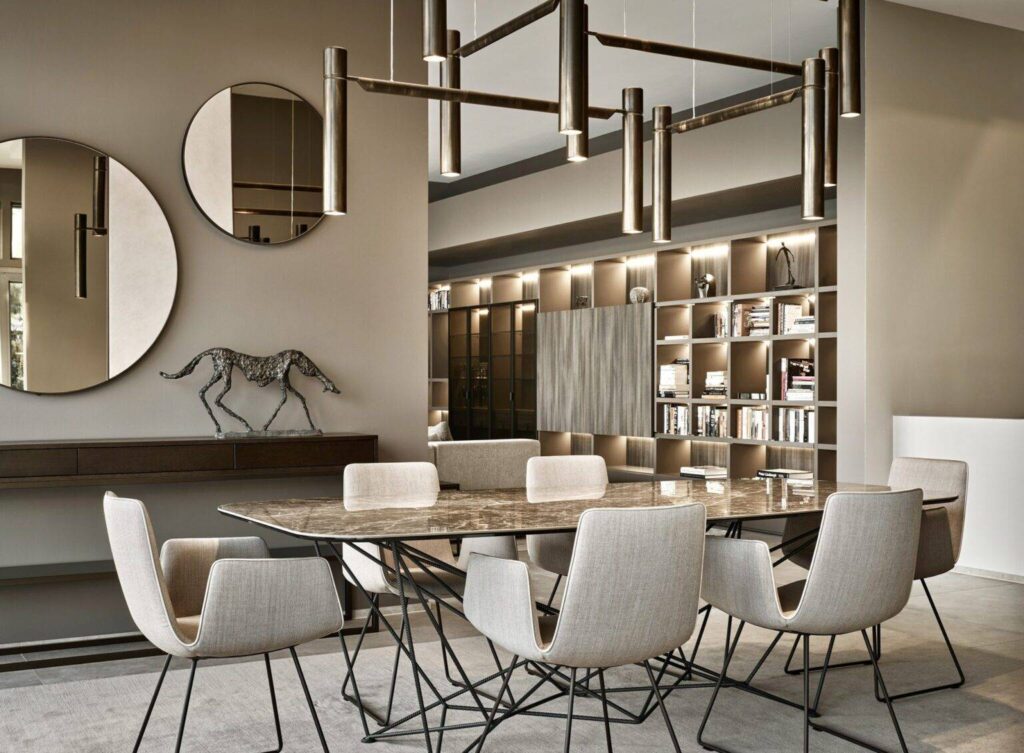Introduction
In the realm of aesthetics and functionality, interior design stands as a testament to the seamless blend of creativity and practicality. It’s more than just arranging furniture or selecting paint colors; it’s about creating environments that enhance the quality of life and culture of the occupants. Whether you’re revamping your home or designing a new commercial space, understanding the principles of interior design can help you create a harmonious and inspiring setting.
The Fundamentals of Interior Design
Interior design encompasses several key elements that work together to create a cohesive and aesthetically pleasing space. These fundamentals include:
- Space Planning: Efficient use of space is crucial in interior design. It involves creating layouts that optimize the flow and functionality of a room. Understanding the spatial dynamics ensures that each area serves its intended purpose without feeling cramped or cluttered.
- Color Schemes: Colors influence mood and perception. A well-chosen color palette can make a room feel larger, warmer, or more inviting. Designers often use color theory to create harmonious combinations that enhance the overall ambiance.
- Lighting: Proper lighting is essential for both functionality and aesthetics. It highlights architectural features, creates focal points, and affects the mood of a space. Combining natural and artificial lighting sources can add depth and warmth to any room.
- Furniture and Layout: The selection and arrangement of furniture play a pivotal role in interior design. Furniture should complement the design theme and provide comfort. The layout should facilitate ease of movement and interaction within the space.
- Textures and Materials: Different textures and materials add visual interest and tactile contrast. Mixing various textures—such as wood, metal, glass, and fabric—can create a layered and dynamic look.
- Decorative Elements: Accessories like artwork, plants, and decorative objects personalize a space and reflect the occupants’ tastes. These elements should be chosen thoughtfully to enhance the design without overwhelming it.
Trends in Interior Design
Interior design is constantly evolving, influenced by cultural shifts, technological advancements, and environmental considerations. Some of the current trends include:
- Sustainable Design: With growing awareness of environmental issues, sustainable design has become a priority. This includes using eco-friendly materials, energy-efficient lighting, and designing spaces that minimize waste.
- Biophilic Design: This trend focuses on incorporating natural elements into the built environment. It includes using natural materials, plants, and maximizing natural light to create a connection with nature, promoting well-being.
- Minimalism: Minimalist design emphasizes simplicity and functionality. It involves decluttering spaces and using a limited color palette and clean lines to create a serene and orderly environment.
- Smart Homes: Technology integration is reshaping interior design. Smart home features like automated lighting, climate control, and security systems enhance convenience and efficiency.
The Role of an Interior Designer
Interior designers bring expertise and creativity to transform spaces. They work closely with clients to understand their needs, preferences, and budget. A professional designer can offer insights and solutions that might not be apparent to the untrained eye. They coordinate with contractors, source materials, and ensure that the design vision is executed flawlessly.
Conclusion
Interior design is an art form that combines beauty with functionality. By understanding and applying the principles of interior design, anyone can create spaces that are not only aesthetically pleasing but also enhance the quality of life. Whether you’re embarking on a DIY project or hiring a professional, the key is to focus on the elements that make a space work harmoniously together. Embrace the journey of transforming your space, and let interior design bring your vision to life.


